Beekeeping is an ancient practice whose history has not one hundred years. Even today, when progress allows manufacturing without human participation, the content of bees and honey mining requires precisely manual labor. This difficult and quite dangerous work, to cope with which is given only to those who truly love it. Like any other production, beekeeping is associated with the use of special equipment. In this article, we will consider a complete list of what is necessary for the content of bees.
Protection
Bees are rather aggressive insects, so first of all you need to take care of our own protection. Even if you do not have allergies, bites are rather painful and can greatly interfere with work.
Consider the main ways to protect:
- The protective grid for the face is one of the inalienable attributes of any beekeeper. It is usually manufactured from fine and light cotton fabrics and translucent tulle, has a cylinder form. The fabric is attached to a hat with wide fields, thereby creating free space around the head, protected from bees. On the bottom edge there is a special lace, which is tightened by fabric, without giving insects to get down from below. In stores you can also meet metal facial grids.
- It will also not hurt to close all areas of skin with dense clothing. It can be like ordinary clothing for work in the garden, old sweaters, jackets and pants, and a bought a suit of a beekeeper made of rubberized or cold fabric.
- Hands must be protected by gloves. For this, conventional dense construction gloves will be suitable. Mittens are not as comfortable in operation, so they are better not to use.
Inventory for contact work with bees
The pioneer is a special tool that emits smoke and pacifies insects. It is needed for the most secure and fast disassembly of the nest. The building body is a hard cylinder with furs, inside which is a smaller cylinder with a lattice. Features of the design allow you to freely pump and skip air, creating a directional stream of smoke.
The baking chisel serves to spread the hives, harvest and propolis. To her from the walls, gender and ceiling, the hives scrape valuables, and if you use it like a lever, you can separate the top housing of the hive from the lower for better cleaning.
The brush for bees is needed to fit insects from the frames. Interestingly, not at all the brush is suitable for this work. Bees extremely aggressively react to dark colors, so brushes specially made from light bristles or horsepower. In the clothes of beekeepers, by the way, it is also recommended to use light tones.
Uterine cells for removing or subrimental modules in hives. Titov cells are particularly popular, where all the walls are made of thin wire mesh with a cell 3 mm and less. From above, the mesh is covered with an iron plate with a rice opening of the motherboard. There is also a special place for feed. As a rule, sugar sweet or cellular honey is used as feed.
Separating grille for blocking the access umba in any part of the hive.
Roast - "temporary" housing for insects while moving or cleaning the hives.
Usually all these tools are stored in the working box, which the beekeeper transfers to the hive in the process of work.
Another box is also needed - for carrying a framework. It is usually designed for transportation of 6 or 8 frames. It is made of light plywood with a folding lid. Frames are suspended at the upper edges on the planks or folds. Despite the relative ease, to carry such a box with the frames is quite difficult, especially if the apiary is large. Therefore, it is better to use a wheelbarrow or trolley for this purpose.
The bee similarities are needed during the distillation of families or landing ROOV, as well as during the cold season in the process of indoor insects. Lands are plywood sheets of approximately 50x90 cm with straps at the edges. One side of the sheet is slightly narrowed and does not have a side - she put it to the hive. Professional beekeepers prefer an alternative to such tough similarities, pulling the canvas onto a wooden frame so that bees, falling, did not beat about the hard surface, and the "spring" on an elastic canvas.
For extension of the frames, the beekeeper requires a blackboard. This is a smooth board 412x265x12 mm (length, width and thickness, respectively). Two strips of 320 mm are attached to the lower part each. Their ends should be stitching on both sides of the main board. For the frame with parameters 435x230, the width of the flow should be shortened to 195 mm. It is also necessary to seer with a needle diameter not more than 1.3 mm to punch holes while pulling the wire into the frame. Professional beekeepers prefer to use a special multiple hole punch, thereby saving a lot of time. In order to place and pierce holes, you need to make a special template. For its manufacture, a sheet or iron sheet is used.
Skating rink - tool for rolling the cooker to the top plank frame. It can be replaced by a conventional wooden storage unit (do only from solid trees) with a length of 17-18 cm, 3 cm wide, 2 cm wide. The ends of the working bar better cut a little and handle the sandpaper so as not to injure their hands.
Spur for fixing the carrier in the wire. This is a small wheel with teeth and a groove throughout the circumference. The groove is needed to destroy the stroke on the wire.
Honey pumping inventory
MEDOGONE - Machine needed to any beekeeper. It serves to extract (revealing) honey from cells. There are many varieties of medogonok, but the most popular is the four-frame design, which allows you to download honey from four socket frames at the same time or eight stores.
Distinguish two types of honeycomb:
- hordial (revolving) - Frames with honeycombs are placed on chords of the circumference of the hormone tank;
- radial - Frames with honeycombs are located along the radius and fixed by the edge to the wall of the tank. There are calculated on 20, 40 and more framework. Since they are pretty bulky and expensive, in beekeeping usually use chorodial honeymills.
To reject honey, you need not only a honeygon, but also another inventory of the beekeeper, which is possible in any specialized store, and sometimes even make it yourself.
Honey renovation inventory:
- cyanchko - made of a tinned mesh or white tin wire and serves to focusing honey. It is attached to the tap of the honeycomb and turns honey in the rebeling process. As the strip quickly clogs, it is better to have a spare to quickly replace dirty and continue to work;
- knife - A better than a few knives for cutting honey searches (intake) in the inventory of the beekeeper (photo) there must be a minimum of two sharply knives. They must always be kept clean, so as not to infect honeycomb fungus. In addition to conventional beekeeping knives, electrical and steam are used;
- the table - on it, the beekeeper prints cells. The table is represented by a wooden box with a folding lid on special backups. In the table there must be special drawers for spent material, storing towels, knives and fastening for frames. In other words, the table is a miniature folding "workshop" of the beekeeper with all the necessary tools to work with the framework;
- medical resistance - a tank for settling honey made of tinned steel or aluminum. As a rule, such tanks can accommodate 400 or 800 kg of product or 285 or 570 liters. Bottom, approximate 50 mm from the bottom, crane crane for casting honey across the container.
Feeders and drinkers for bees
The drinking bowl is a wooden barrel or a metal tank with a small crane and a long board attached to this crane. From the board make an improvised chute, nulling along the edges of a plank or hollowing the groove. When the water slowly drips on the tap board, it passes down the groove and heats up under the rays of the sun. Bees willingly drink such warm water and constantly fly around a common dressing bowl.
It is also necessary to establish individual drinkers for each hive. They can be conventional bottles with stuck wicks.
Feeders for bees are of different shapes, made from different materials, etc. The main thing is that the feeder meets certain rules.
Requirements for feeders:
- location at the very warm point of the hive;
- capacity (one port of feed should be at least 4 kg);
- ease of use (easy to add feed or brushing the feeder).
The feeder-drawer is a strong wooden box with a narrow slit at the bottom. It has two partitions that do not reach the top of the feeders, separating it into several compartments. In each branches poured food, and the bees get to him, penetrating inside through the slot below. The box put on top of the frames so that the gap covers several "streets". The volume of such a feeder usually does not exceed 3-4 liters.
The frame feeder is a deep narrow box of a nesting frame and plywood sheets. So that the sweet syrup did not flow, the seams of the box are sealed with wax.
Roast feeders are another example of a beekeeper inventory with their own hands. If there are no special feeders in the presence, take advantage of the usual glass jars. They need to be washed, dry, pour the syrup inside, cover the gauze, folded in a couple of layers, and tie the neck of the rope. Turn the banks down the neck and put on the frame over the jack.


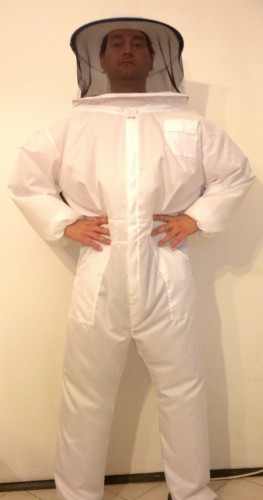
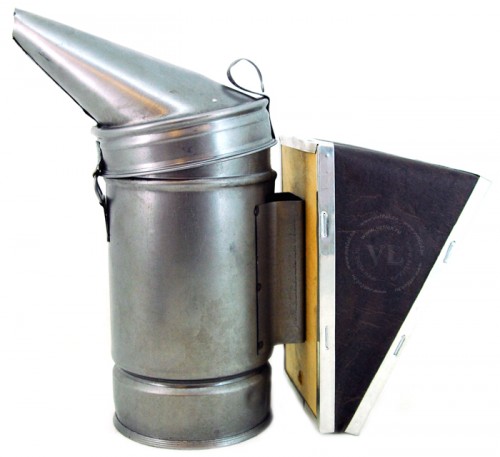
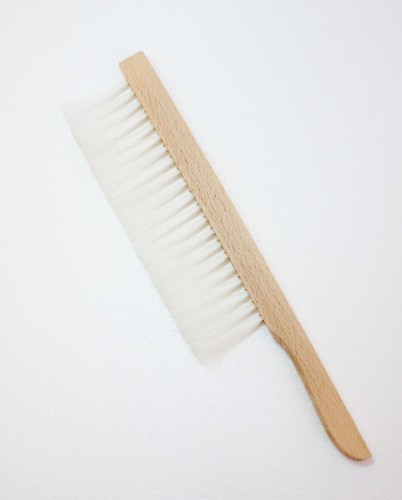
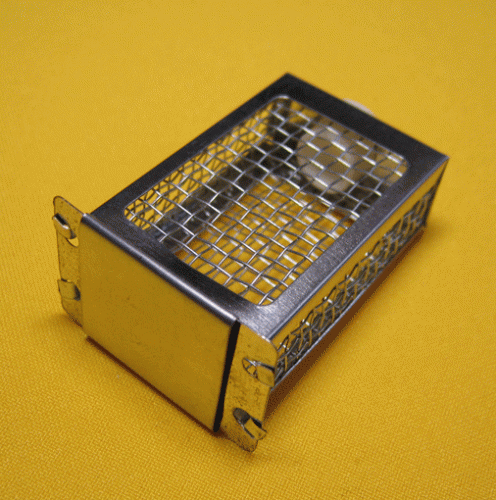
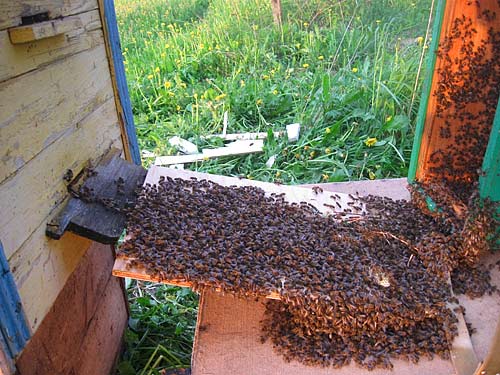
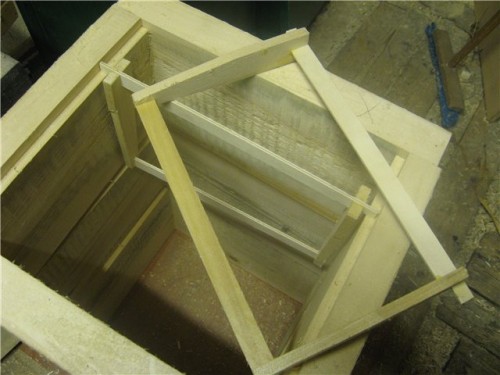
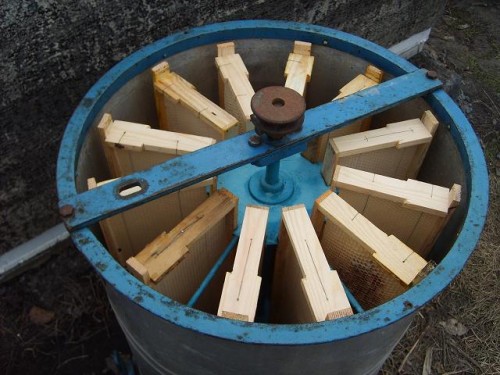
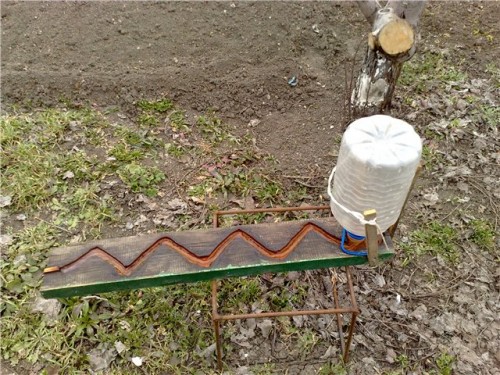
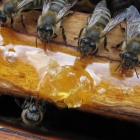
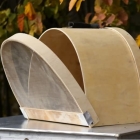
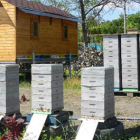
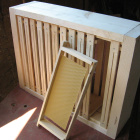
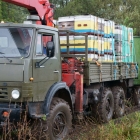
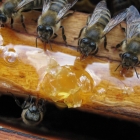
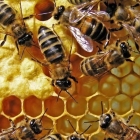
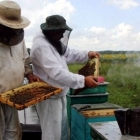
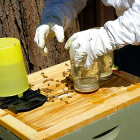
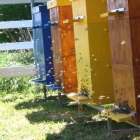
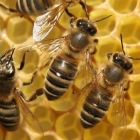
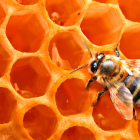
 Start a discussion ...
Start a discussion ...